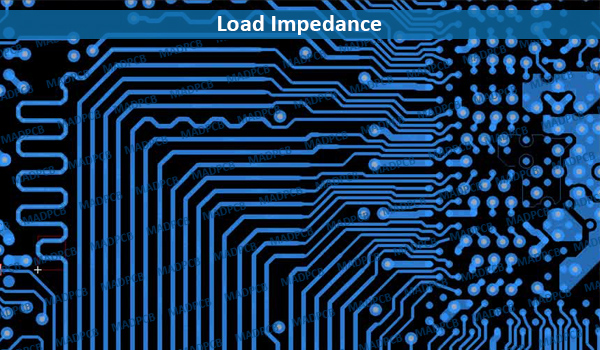What is a Load Impedance?
A Load or Load Impedance is the concept of connecting a device or component to the output of a functional block, thus drawing from it a measurable amount of current. For example, you can connect a resistor to a power supply or connect a buffer (op-amplifier) amplifier to an oscillator. Therefore, a load impedance is the input impedance of the next functional block in the chain.

Load Impedance
A buffer amplifier, or buffer, provides electrical impedance transformation from one circuit to the next circuit in the chain. In summary, it ensures the transfer of current or voltage from the first circuit, which has a high output impedance level, to the second circuit that has a low input impedance level. The interpolated buffer amplifier inhibits the second circuit from overloading the first circuit and impeding proper functionality. In general, there are two main types of buffers: a current buffer, or a voltage buffer.
A load impedance is present when the load has components other than just purely resistive components, like resistors, and also incorporates reactive components, like inductors and capacitors. The reactive components represent the imaginary impedance, whereas the resistive elements contain real impedance.
Functionally, the resistors dissipate the energy when we apply voltage, whereas capacitors and inductors store the energy. Therefore, we consider their impedance to be imaginary.
The Importance
Like with any resistance purposely added to a circuit, the ultimate goal is to control the flow of current and voltage within the circuit. Since impedance is merely the extension of the principles of resistance in AC circuits, the use of load impedance is understandably crucial to circuit functionality.
Load impedances are also vital in assessing the behavior of a circuit under various conditions. For example, a circuit achieves maximum power transfer when the load impedance is equal to the circuit output impedance. A change in the load impedance will affect the charging and discharging of RC time constants. This, of course, depends on the circuit’s design, but it can also cause a change in the rise and fall times. In summary, a circuit’s behavior differs under conditions such as inductive and capacitive loads, or even short circuit conditions.
Load impedances are also vital when impedance matching is your objective for a particular circuit. Let’s look at the example of transmission lines. Ideally, you want the source impedance, transmission line impedance, and load impedance to be equal. Achieving these ideal parameter conditions will ensure that a 7V source signal will be a 7V signal throughout the transmission line and the output will also observe or see a 7V signal.
Load impedance affects the performance of circuits, more specifically, output voltages and currents. These effects occur in voltage sources, sensors, and amplifiers, to name a few. One of the best examples of this is mains power outlets since they provide power at a constant voltage. In this case, the load is the electrical appliance you connect to the power circuit. This means that when a high-power appliance switches on, it significantly reduces the load impedance. However, impedance matching is not only critical to a transmission line, but its importance extends to PCB (printed circuit board) interconnects as well.
Be sure to have your PCB designers and PCB production teams working together towards understanding the use of load impedance for all of your company’s applicable PCB designs.
